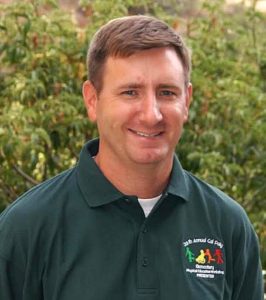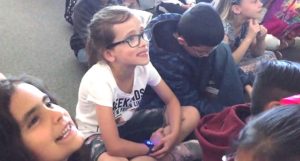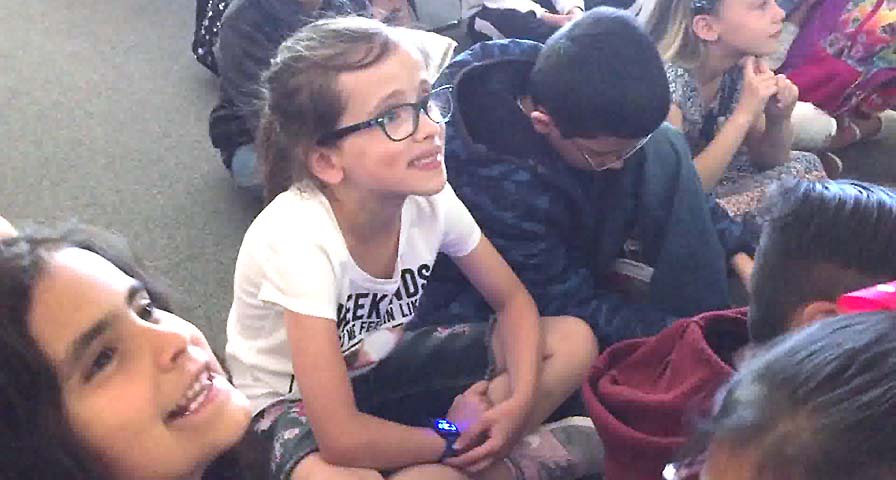As One State Determines Best Path to Teaching SEL, Physical Educators Demonstrate Relationship Between Fitness, Social Interactions, Academic Development
On Dec. 30, 2021, a College of William and Mary (Va.) student called upon the Virginia Department of Education to make Physical Education classes the foundation of the state’s new focus on Social-Emotional Learning for students. As many teachers using the IHT ZONE wrist heart rate monitor and IHT Spirit assessment software demonstrate, SEL remains a priority in PE programs across the country.
“One of our main initiatives is teaching the whole child and so SEL’s a really important piece of our strategic plan,” Jamie McCarthy, Cambridge (Mass.) Public Schools K-12 Curriculum Coordinator for Health, PE and Wellness said in a 2019 IHT blog. “It happens so naturally in our class and it’s part of our curriculum.”
Lila Newberry, a sophomore public policy major at William & Mary, wrote that SEL should be included in all classrooms, but as VDOE adheres to House Bill 753, PE makes the most sense as a starting point.
“Physical education classes already scaffold students towards healthy social and emotional growth, and this can be further enforced by SEL-based class components provided to all K-12 students,” she wrote.
Social-Emotional Learning in Physical Education

PE teachers across the country already incorporate SEL into their programs, including recent SHAPE America Elementary School PE Teacher of the Year Matthew Bassett. Under his direction, the PE program at San Jose Charter Academy (Calif.) takes a whole-health approach that includes ensuring students are both physically and emotionally healthy.
“Everything we do starts with making sure the students are in the right social-emotional space,” he said as he prepared to welcome students back to campus for the 2021-22 school year. “I think our social-emotional worth is where we’re going to get education recovering, and exercise can definitely help with that.”
Other PE teachers echo Bassett’s focus on essential social-emotional skills.
“Our whole curriculum is based around Social-Emotional Learning,” Lesher (Colo.) Middle School PE teacher Jo Dixon said.
Dixon and teaching partner Matt Moeller build their movement-based PE curriculum, which includes IHT ZONE heart rate monitors to show students how hard they are exercising, on appropriate interpersonal behavior skills.
“Everything we do is through that Social-Emotional Learning lens,” Moeller said. “We want to hone in on those interpersonal skills, and then by using heart rate on the back side allows us to make sure that they are moving at the same time.”
While students work toward daily goals for minutes spent exercising at moderate or vigorous heart rate levels, teachers also focus on the SEL aspects, Dixon said:
- “Are students hitting their target heart rate?
- “Are students able to shake hands with others and introduce themselves?
- “Can you be a good teammate and learn what ‘spirit of the game’ means?”
“Those components are lifelong,” Dixon said.
“We want to make sure they can communicate effectively, that they can problem-solve when necessary and that they are courteous to each other,” Moeller said. “That is our main focus, and again we rely on the heart rate data to make sure they are moving at the same time.”
Selma Middle School (Ind.) teacher Tammy Brant made sure one of her first lessons after adding IHT ZONE heart rate monitors to her PE curriculum focused on getting students to calm down.
“The social-emotional element is important,” Brant said. “Not everything we do is geared toward a high heart rate. Once your heart rate is a certain level, your performance goes down. If you are so anxious and worried about a test, how are you going to get yourself calmed down? You’ve got to get that heart rate down and relax.”
When administrators learned about Brant’s lesson, they rushed to show their support for it. When he heard about it, Principal Heath Dudley came to watch.
“Actually, he came down and videotaped the class because he thought this was amazing,” Brant said.
Ingrained in PE Standards
SHAPE America, which creates the standards by which students are assessed on a variety of physical skills, adopted language in 2013 from the Collaborative for Academic, Social and Emotional Learning (CASEL) to better connect physical literacy and SEL.
- Standard 4: The physically literate individual exhibits responsible personal and social behavior that respects self and others.
- Standard 5: The physically literate individual recognizes the value of physical activity for health, enjoyment, challenge, self-expression and/or social interaction.
SHAPE America President Elect Dr. Kymm Ballard said SEL has always been a focus of health and PE teachers.
“(Health and PE) professionals are the natural leaders to teach SEL because they have always made SEL an important part of their curriculum,” she said.
Massachusetts Association of Health, Physical Education, Recreation and Dance (MAHPERD) executive director Maria Melchionda made that point to officials when lobbying the state board of education to make physical education a priority along with SEL. In 2016, IHT and MAHPERD launched a data collection effort that assessed skill development in PE classes.
“I told the board, ‘As long as I’ve been in education, and that’s about 35 years, we’ve always done SEL in physical education and health,’” Melchionda said. “’In fact, I don’t know of a teacher out there in the classroom or in these two disciplines who hasn’t done SEL. It’s ingrained in the way we teach.’”
In Mitchell (SD) School District 17-2, middle school health and PE teacher Cheryl Miller used IHT’s assessment software to create assessments to gauge students’ on their mastery of SEL (behavioral) skills along with their fitness achievements. She places as much importance on students demonstrating appropriate social skills as she does their fitness levels.
“We want athletically talented kids, but we also want them to be self-efficient, good sports, all of that type of stuff as well,” Miller said. “So many times we have parents who think everything is okay (in PE) if their child is athletically talented and they forget there are things like social connections to it, the self-awareness, good sportsmanship, decision-making. That’s all part of it too.”
Tying Heart Rate to Emotional Health
 Schools have found ways to use the heart rate monitors outside of PE space. The Littleton (Colo.) Public Schools created a program to address student emotional health that drew national attention on NBC’s Today Show. Under the direction of counselors, students at East Elementary School wear IHT ZONE heart rate monitors to help manage their emotions throughout the day.
Schools have found ways to use the heart rate monitors outside of PE space. The Littleton (Colo.) Public Schools created a program to address student emotional health that drew national attention on NBC’s Today Show. Under the direction of counselors, students at East Elementary School wear IHT ZONE heart rate monitors to help manage their emotions throughout the day.
Wearing the heart rate monitors helps students recognize changes that may accompany stress, anxiety or other emotions that can result in behavioral changes. When they see that their heart rate level doesn’t match their activity – for example their heart rate is elevated when they are at rest (shown as red on the IHT ZONE) – they can practice skills they’ve gained through the Operation Dragon Heart program.
“What we’ve seen has been significant,” Littleton Director of Social, Emotional and Behavioral Services Nate Thompson said. “The progress these students made was life-changing for them. The students who were able to do this and make their monitors change color feel so proud of their ability to do that. This has real meaning for the kids and families who are using it, and for the staff as well.”
The meaning is visible in the PE space as well. Miller assesses students every day and has identified a connection between fitness, social skills and academic progress.
“I know the relationship is there,” Miller said. “You can look at a student’s progress in classes and if he’s struggling, you can look at his SEL information and see he’s struggling with all of those skills as well. I want to correlate SEL to as many things as I can.”
That’s why Bassett believes health and PE teachers will play an even more important role in overall student education moving forward.
“What we do in the Physical Education and health education realms will help with their coping strategies and how to work back into getting ourselves where we need to be mentally so we can go back into the other classes and get back to the learning that we had before the pandemic,” he said.




